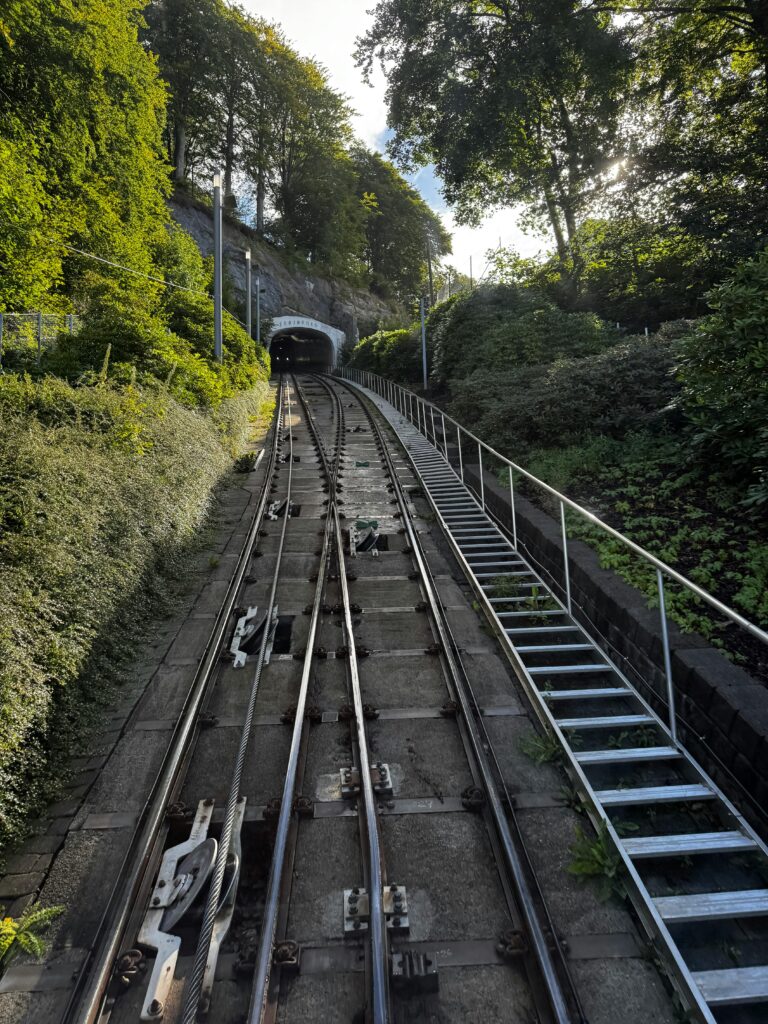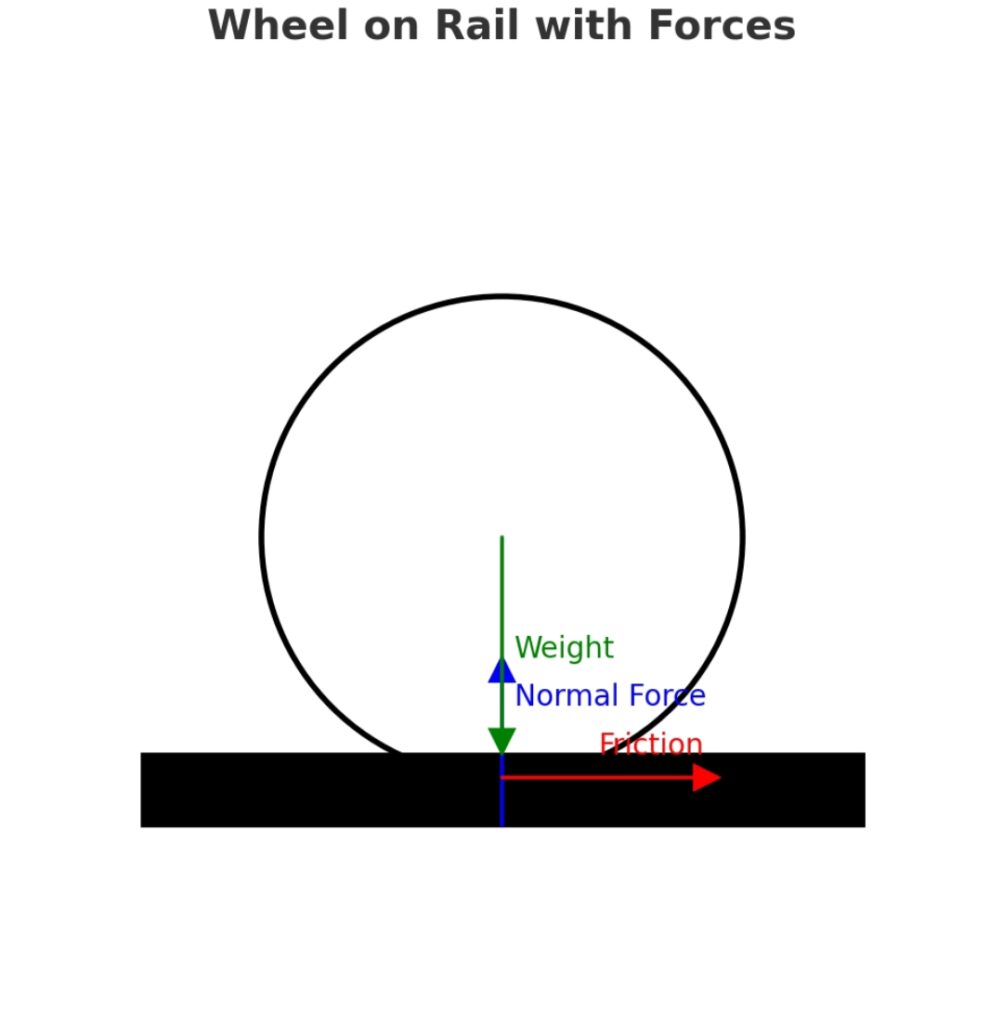How Does a Train Run?
Introduction:
Each day, millions of people ride trains. In more than 200 years of development from the slow, chugging of an old steam engine to the fast whoosh of the Japanese bullet train, there has always been something that captured our imagination! But have you ever stopped to think, how does a train run, anyway?
There is a complex world of physics—forces, friction, energy and even magnetism—behind the whistles, wheels, and tracks. Here is a simple explanation, so next time a train goes by, you’ll know what’s happening!

1. The Source of Power:
Trains cannot run without some form of power. However, the way trains are powered has changed over time:
1. Steam Locomotives (1800s)
The steam locomotive burned coal or wood which created steam, which pushed pistons, which drove the wheels.
A classic case of thermodynamics: heat to mechanical motion.
2. Diesel-Electric Trains (1900s)
The diesel engine drives a generator, which produces electricity, which powers the motors on the wheels.
They are considerably more efficient and powerful than steam.
3. Electric Trains (Modern)
They’re powered by electricity either from overhead wires or rails.
They are silent, efficient, and environmentally friendly.
4. Maglev (Future-Potential)
They use magnetic fields to float along the rails with almost no friction, so they can go insane speeds (600 km/h+).

2. The Role of Friction and Traction:
This may surprise you: trains run on smooth steel wheels over smooth steel rails. How is slipping avoided?
The answer is static friction. The minute grip between wheel and rail is sufficient to move the train forward.
The locomotive precisely manages torque to avoid wheel spin.
Once in motion, trains require a very small amount of energy, compared to a wheeled vehicle, because of the almost non-existent friction at the contact surface.

3. Overcoming Resistance:
As soon as the train gets going, two big efforts to slow it down:
Rolling Resistance: resistance between wheel and rail. Small, but there is always some.
Air Resistance (Drag): becomes huge at high speed – this is why bullet trains have pointed “nose cones.”
Some common formula:
Resistance = A + Bv + Cv²
( where v is velocity).
4. How Trains Stay on Track:
A bit of inspecting of train wheels will reveal they are not flat they are slightly conical (tapered). What a brilliant design:
In a curve, the train moves sideways.
The outer wheel rotates on a bigger diamater and the inner on a smaller diameter.
This difference allows the train wheels to roll, not slip, after the train moves sideways around the curve.

5. Curves and Balance: The Role of Banking
Have you ever noticed train tracks that incline upwards on the outer side of the turn? This is superelevation (or cant).
The outer rail is tilted or raised to counteract centrifugal force.
Superelevation reduces the chance of derailment or passenger discomfort.
Without superelevation, trains would tip completely on sharper angles of turns.

6. Stopping a Giant: Braking Systems
Bringing a 10,000-ton train to a stop is serious business. But physics saves the day once again:
Air Brakes: Air brakes were invented by George Westinghouse in 1869 and are still in use today. In essence, compressed air pushes brake pads against mounted wheels.
Dynamic Braking: Electric motors can be run in reverse to turn motion back into electricity (sometimes fed to the grid).
Emergency Brakes: Emergency braking releases air quickly for immediate stopping power.
7. Maglev: The Train of the Future
Maglev trains don’t use wheels at all.
Instead:
Strong magnets lift the train above the track.
Linear motors push it forward.
No rolling friction = almost no noise, super speed, and high efficiency.
It’s like physics magic—only it’s real.
8. Why Trains Are So Efficient
There are many reasons why trains are one of the most energy-efficient modes of transportation:
Steel-on-steel has very little rolling resistance.
They can carry thousands of passengers or tons of freight all at one time.
Modern, electrified trains have far less pollution than planes or trucks.

Summary:
Tap on a clip to paste it in the text box.
1. Power can come from steam, diesel, electricity, or magnets.
2. Friction (tiny but mighty!) provides the grip between wheels and rails.
3. Resistance is due to rolling + air drag.
4. Wheel shape + track design keep trains upright.
5. Braking systems can safely stop large masses.
6. Maglev trains would hint at an era of nearly frictionless travel.
Thus trains run not only based on engineering, but since we are abiding by ageless laws of physics.
Conclusion:
Trains may seem to be just simple machines running on two rails, but trains are actually amazing trains of physics and engineering concepts. From the gigantic power of steam engines to the out-of-sight glide of maglevs, every development has directly or indirectly resulted from the laws of motion, friction, and energy.
The most crucial element is balance:
Friction is so low it saves energy, yet so high it grips the rails.
The wheels are specially designed so trains can get through curves without steering.
The tracks are designed so they can handle those loads without responding to the applied forces, thus keeping passengers and ground transportation users safe.
The braking system must be immensely powerful compared to the weight of the trains being stopped, which often weigh thousands of tons.
But with that heavy inertia overcoming friction, and through magnetic levitation, we can now see trains accelerate to speeds we previously wondered how we would get there— because we are humans and we are an ever-evolving mass of knowledge about physics.

Customer FAQs
Q1: What prevents trains from slipping?
Ans. Trains don’t slip because static friction + controlled torque is more than sufficient for them to grip.
Q2: How do trains turn?
Ans. Trains turn using conical wheels and banked tracks.
Q3: What slows a moving train?
Ans. A moving train is slowed by rolling resistance, drag, and brakes.
Q4: What’s faster, a train or an airplane?
Ans. Airplanes still win for distance, but high speed maglevs are running a close race!
Q5: What makes a train environmentally friendly?
Ans. A train can transport enormous weights and consumes extremely little energy per passenger.
